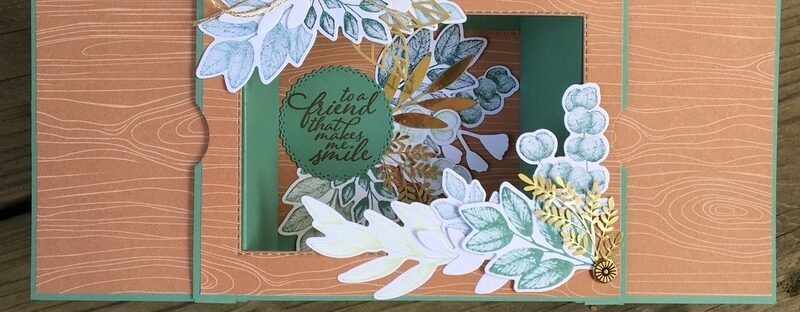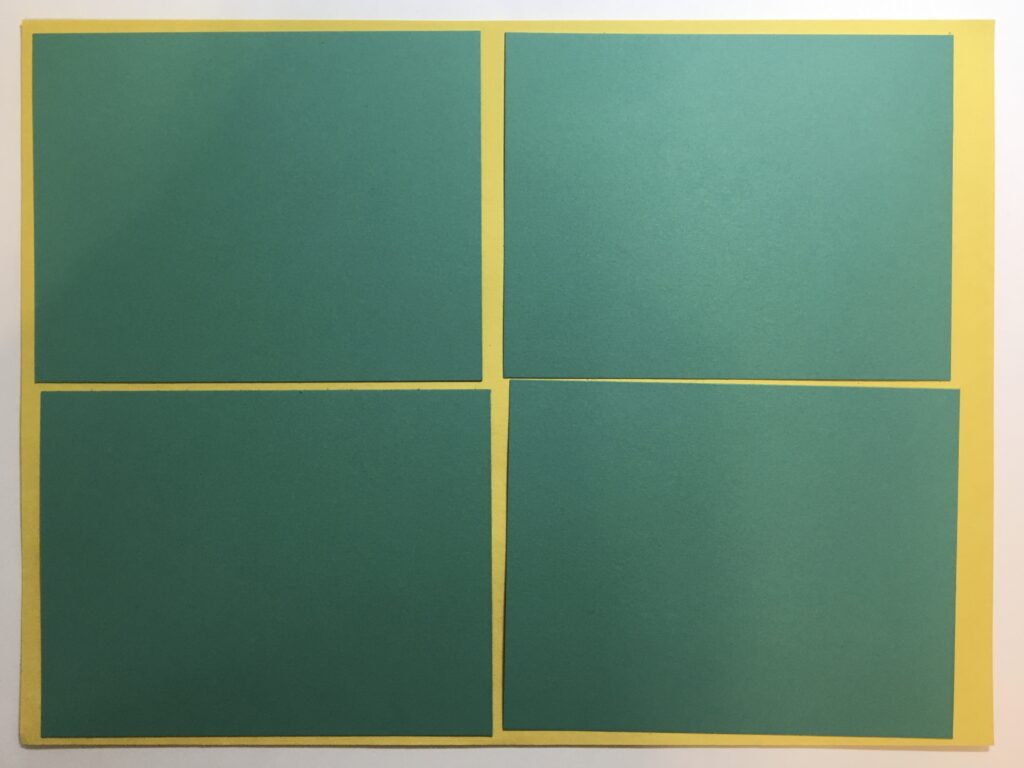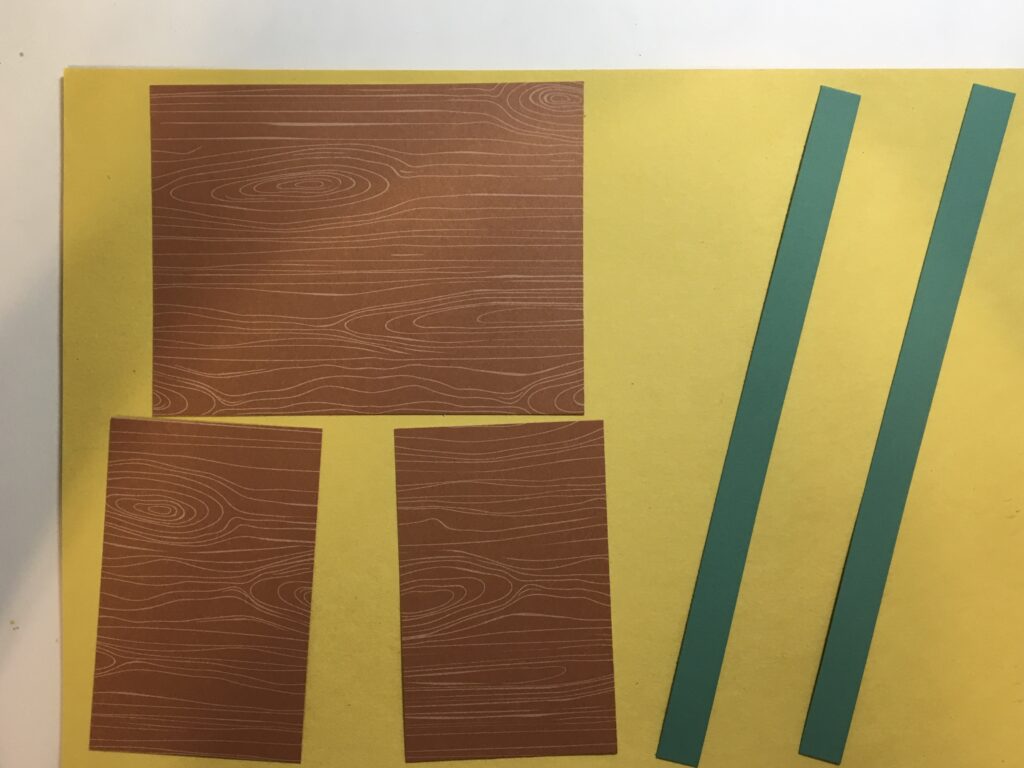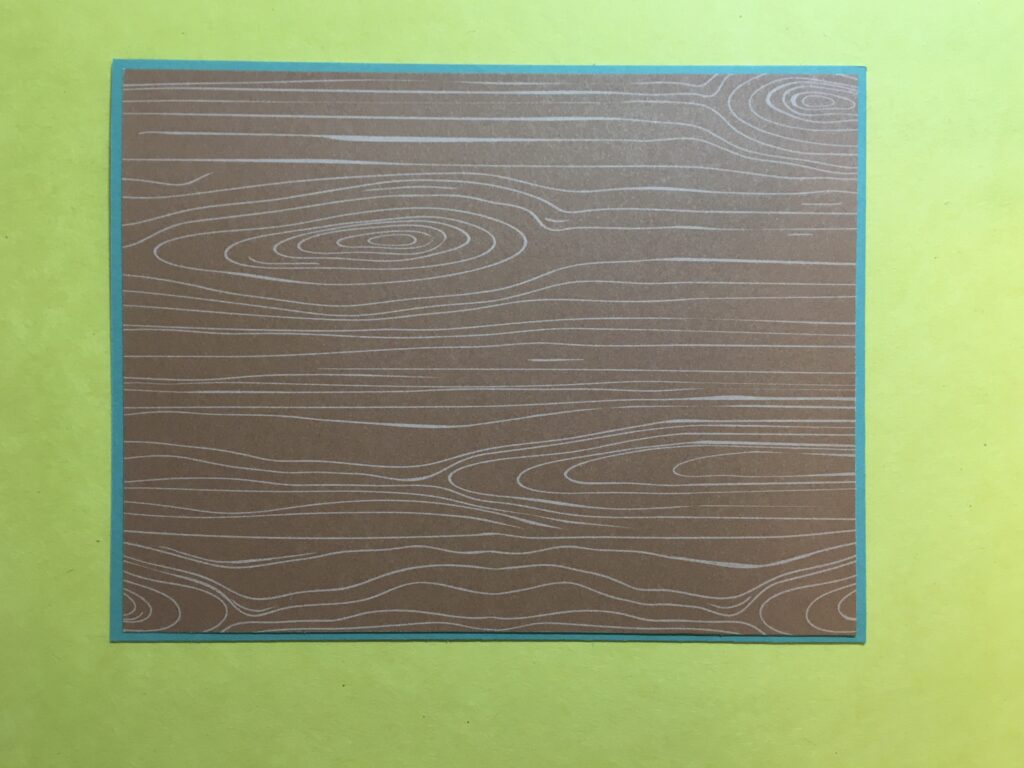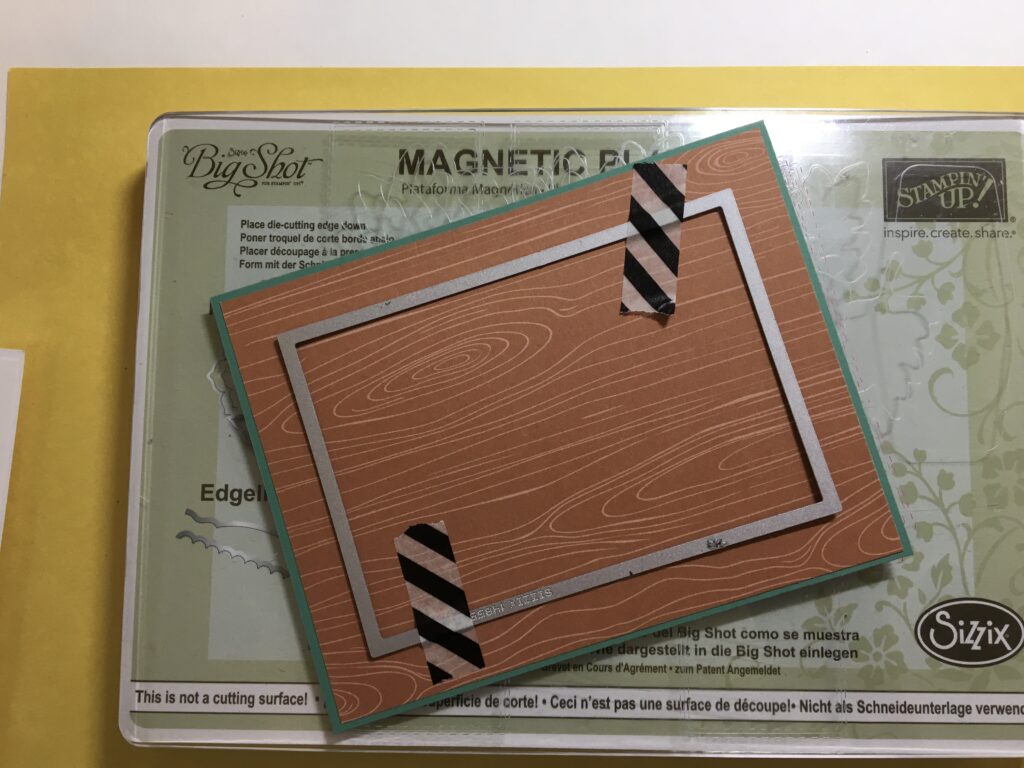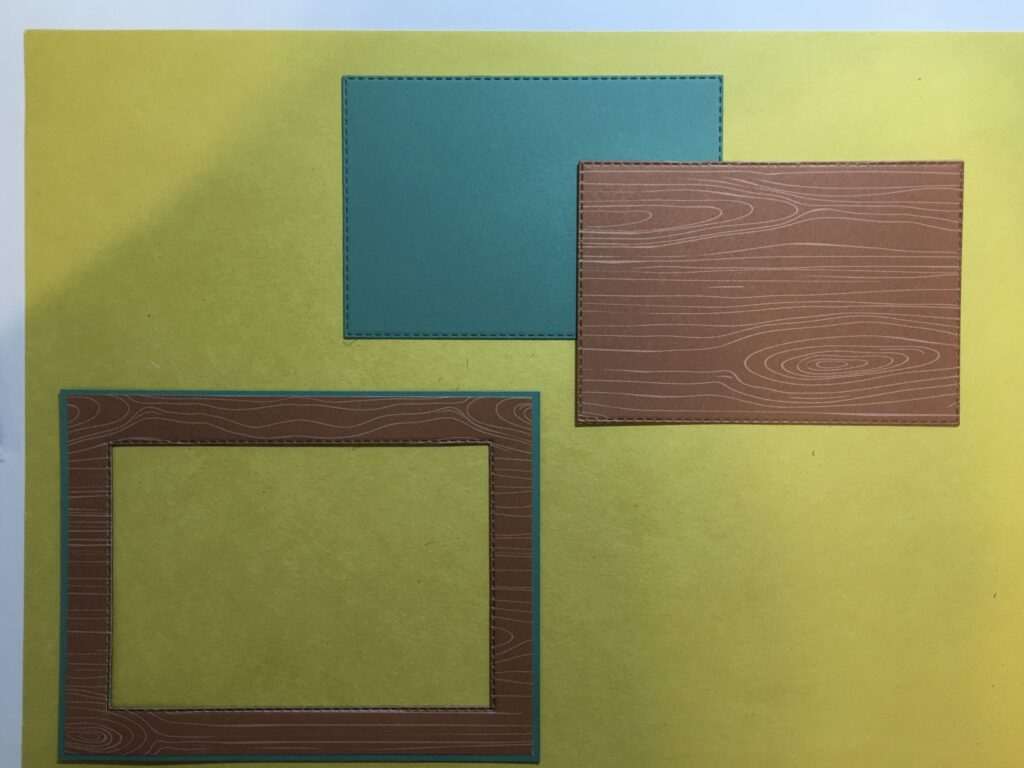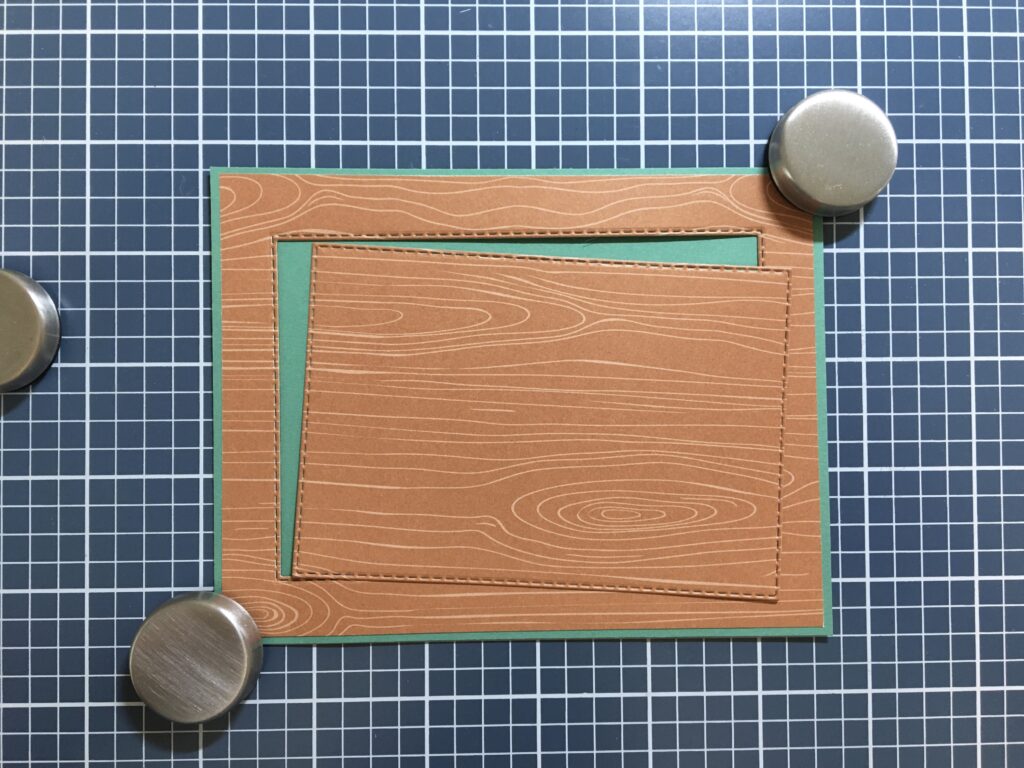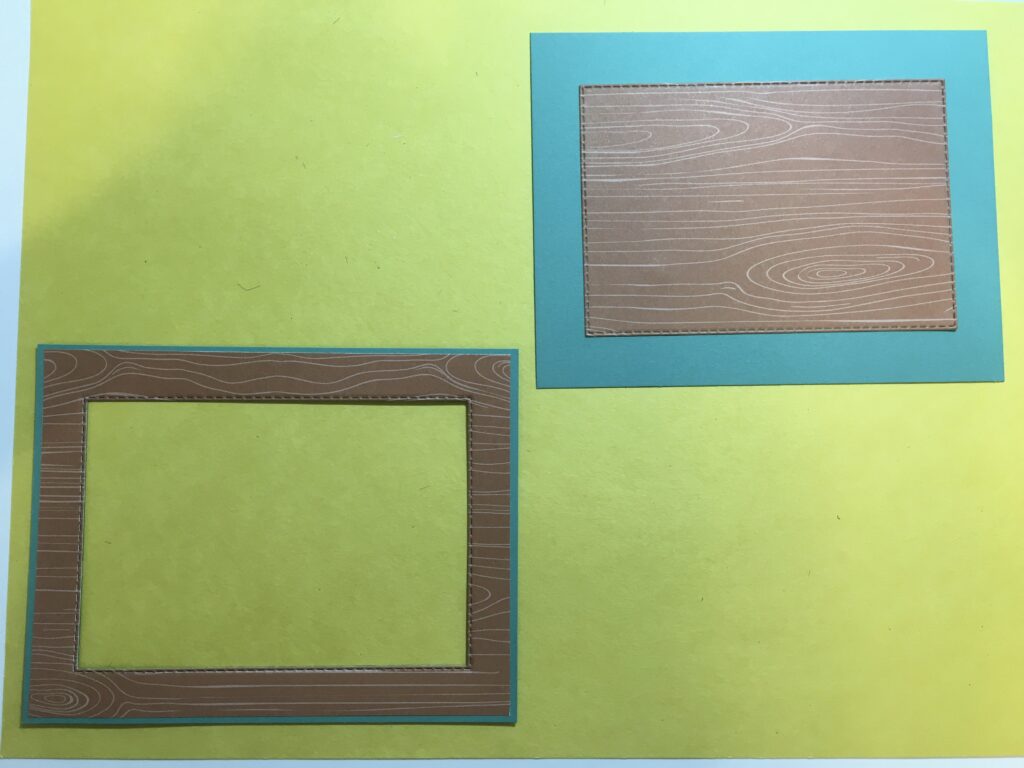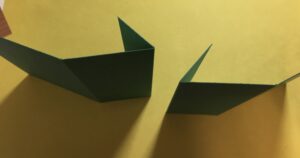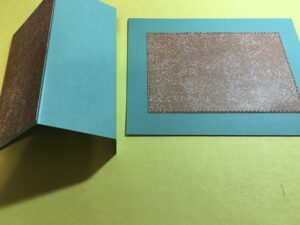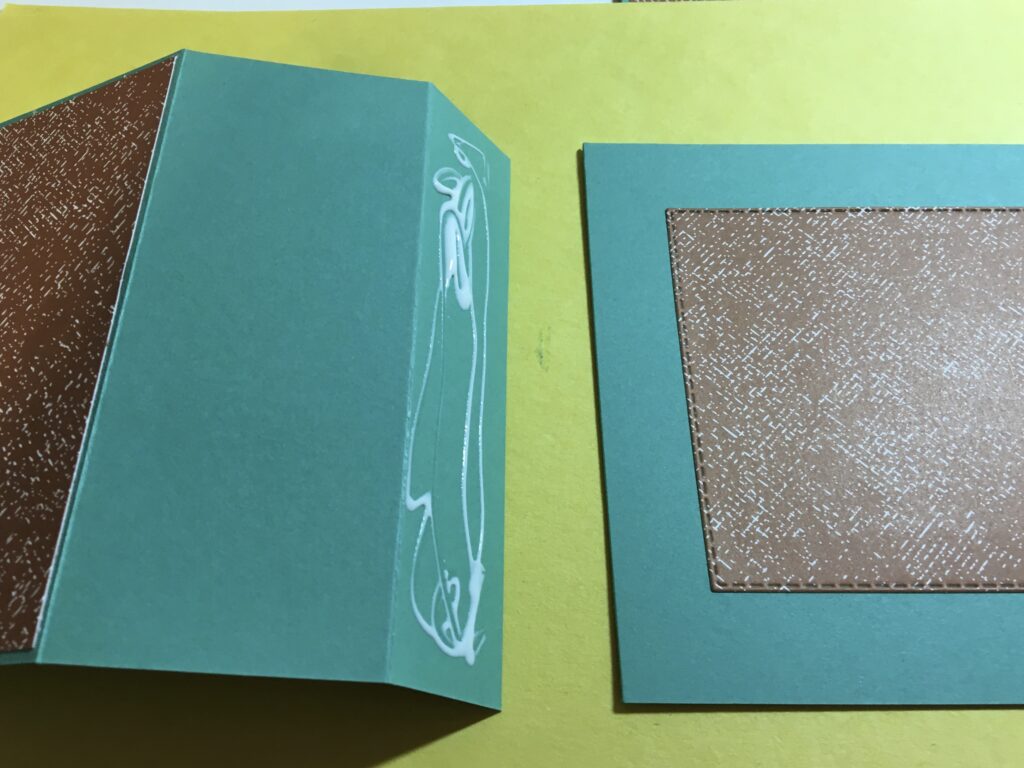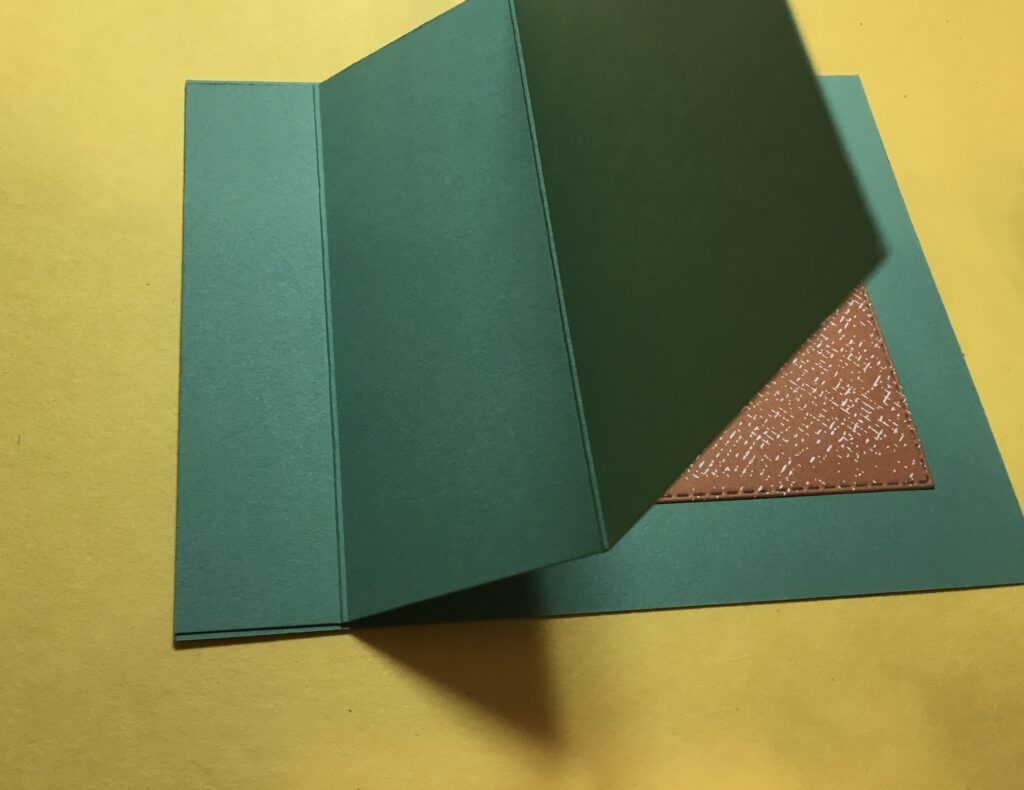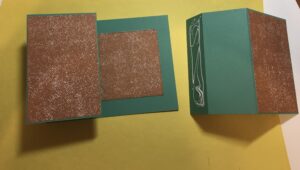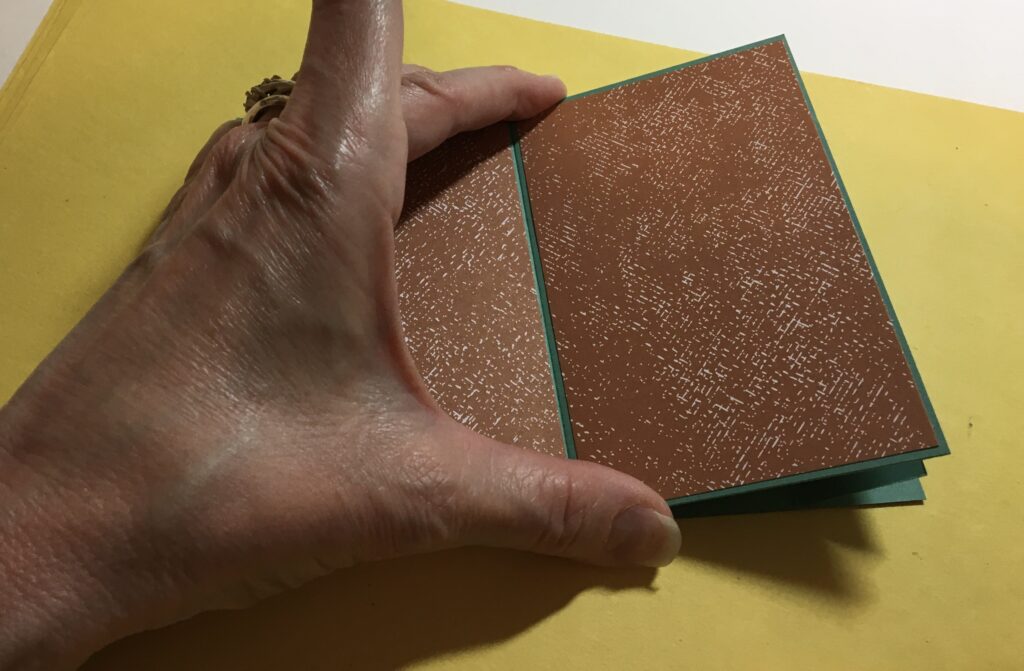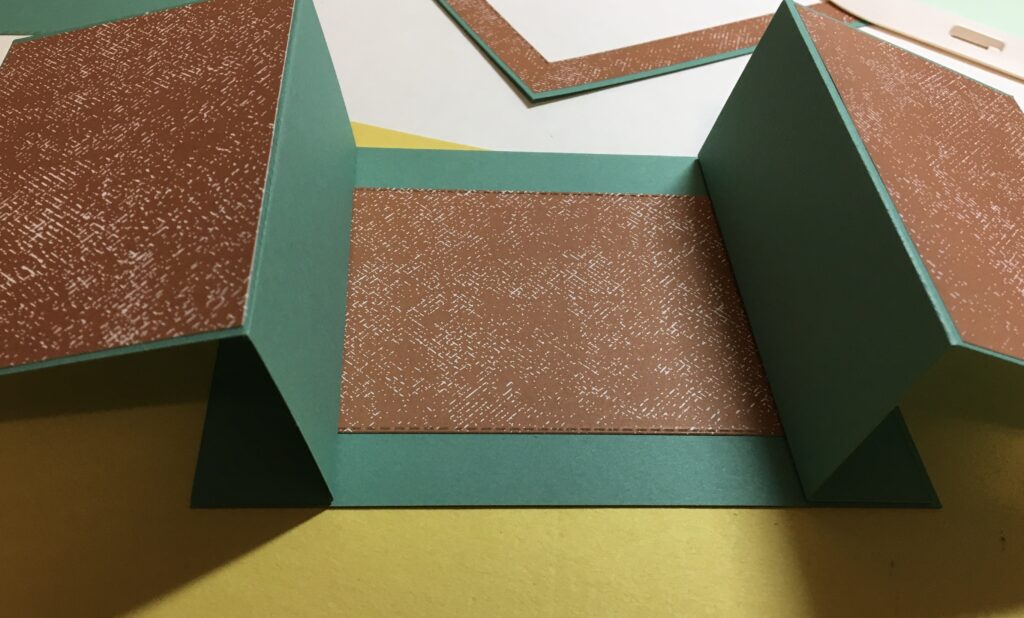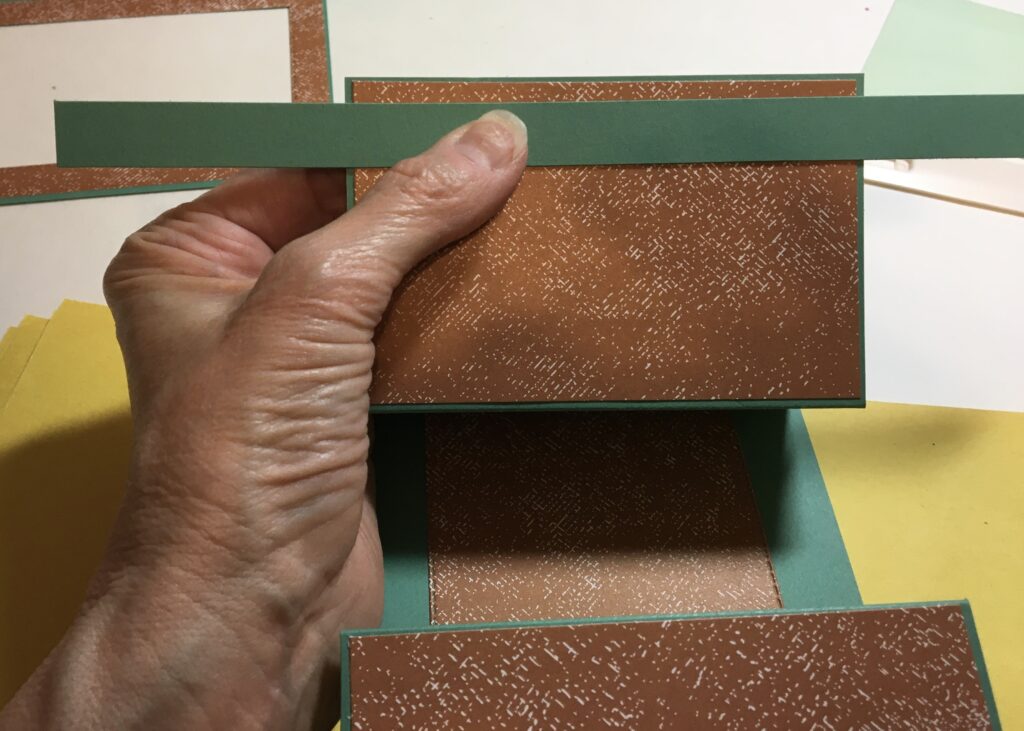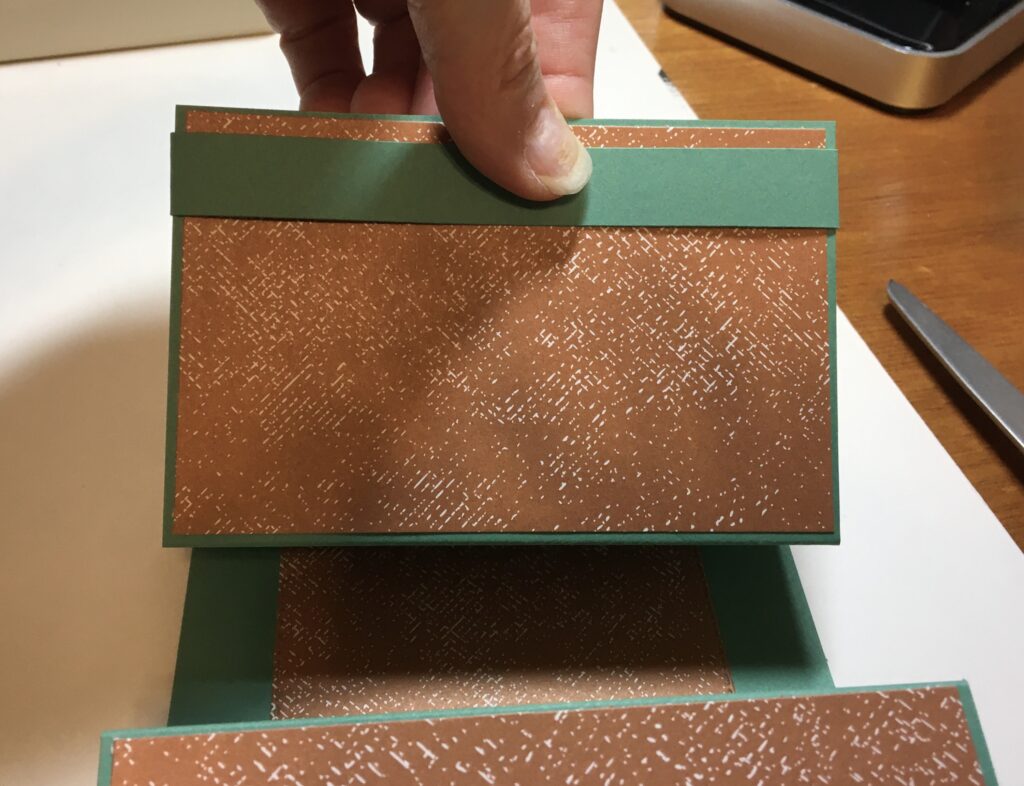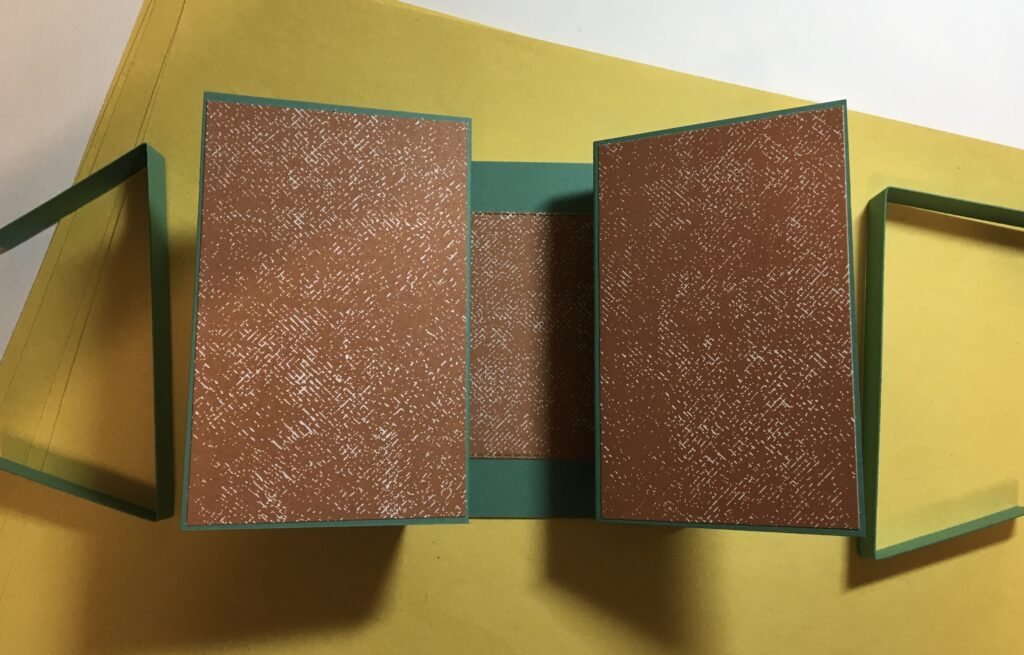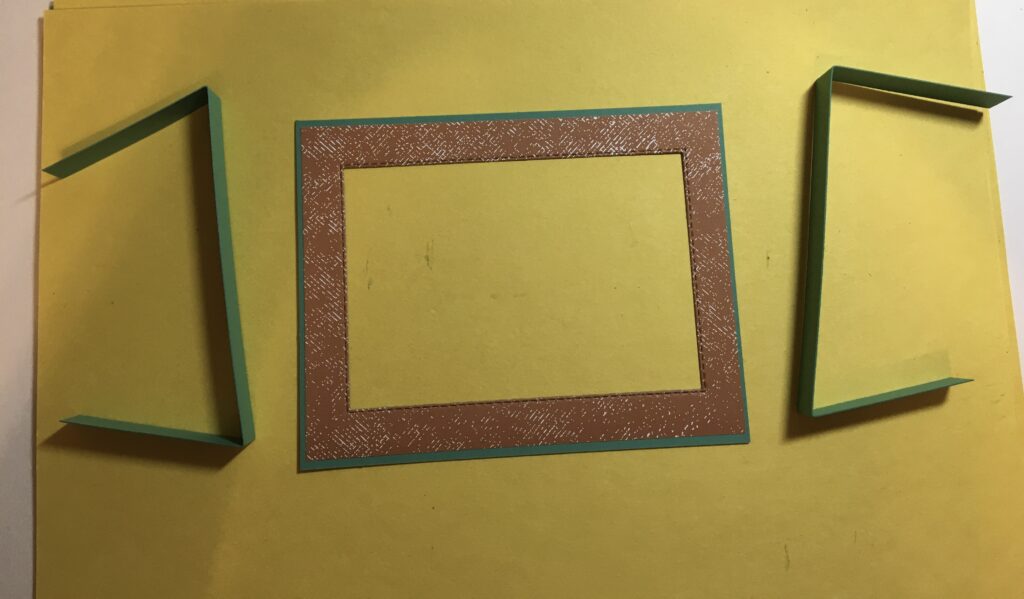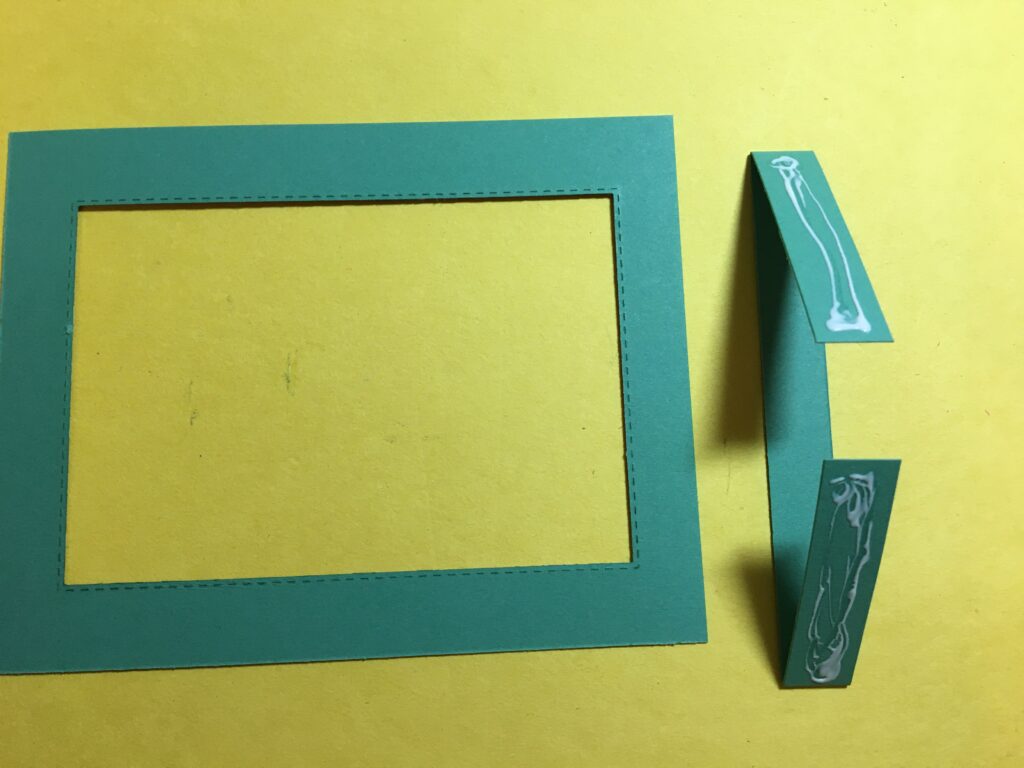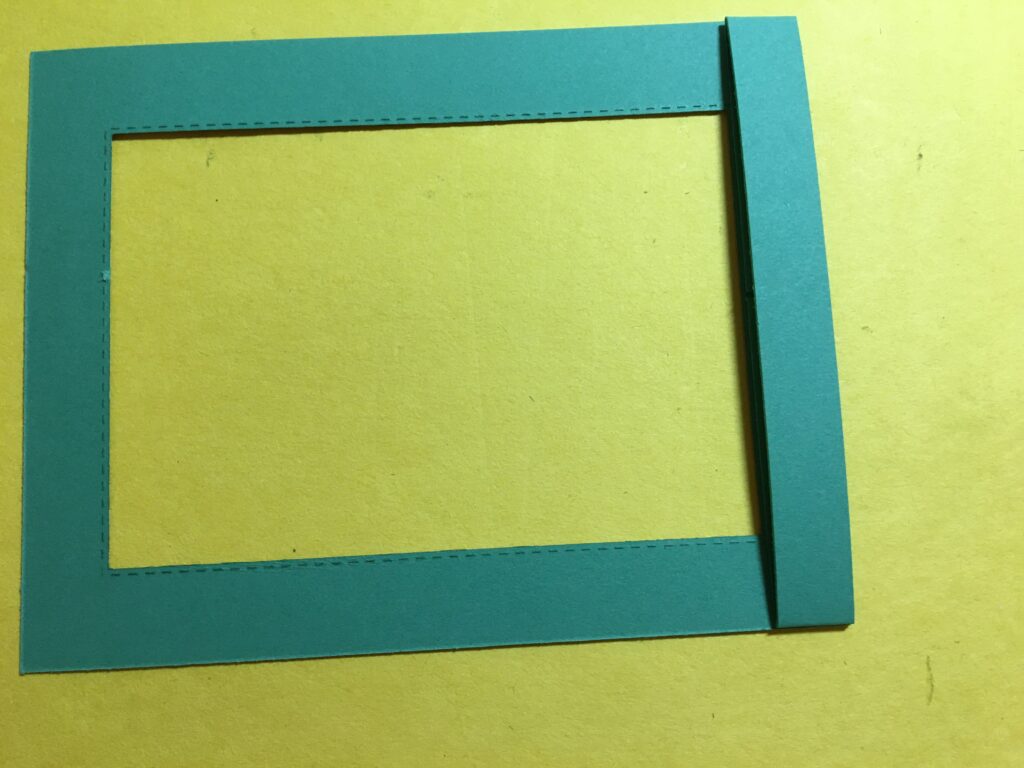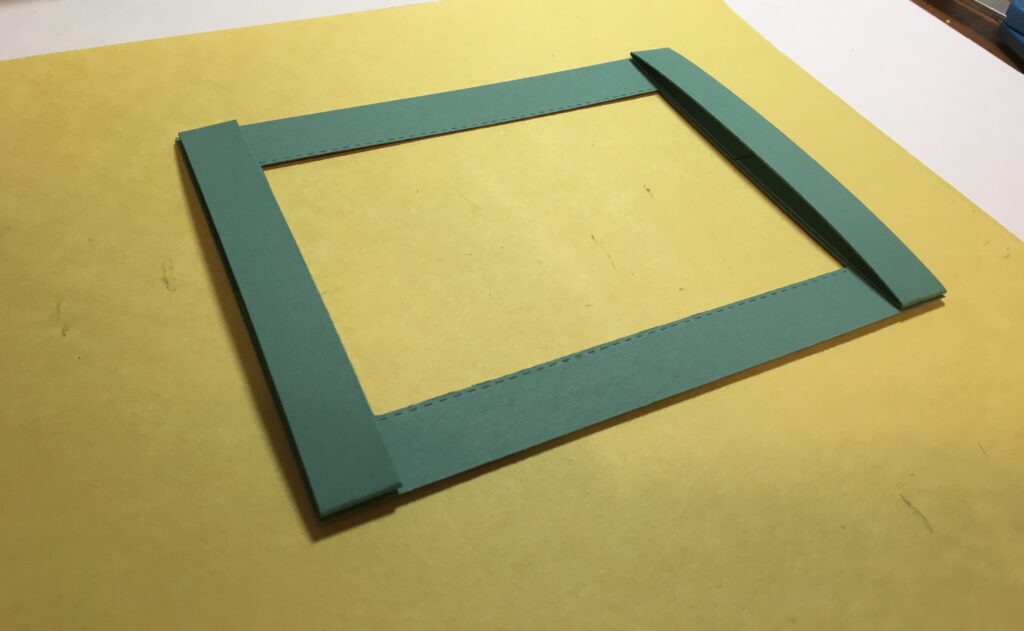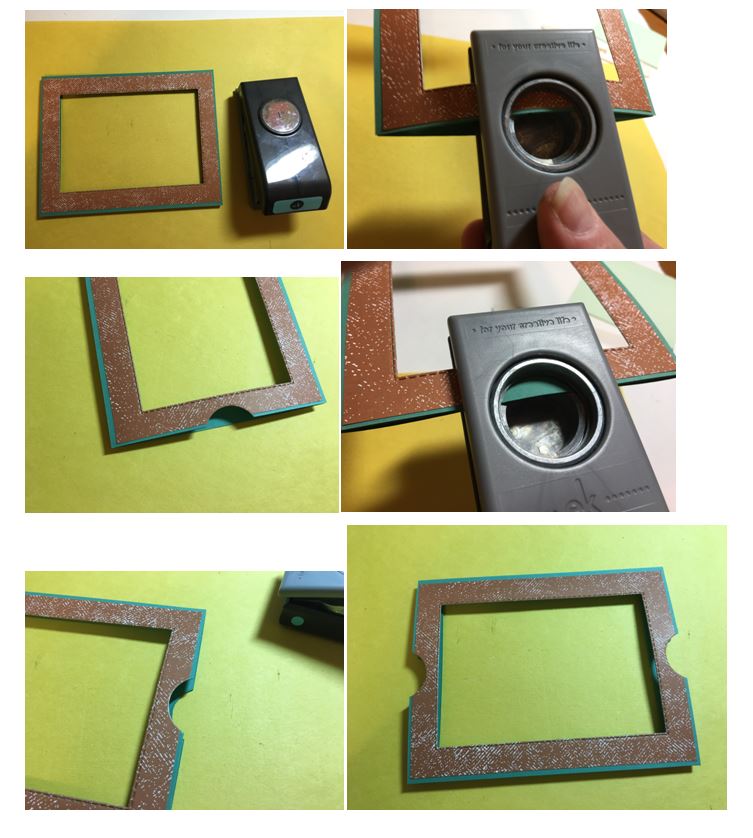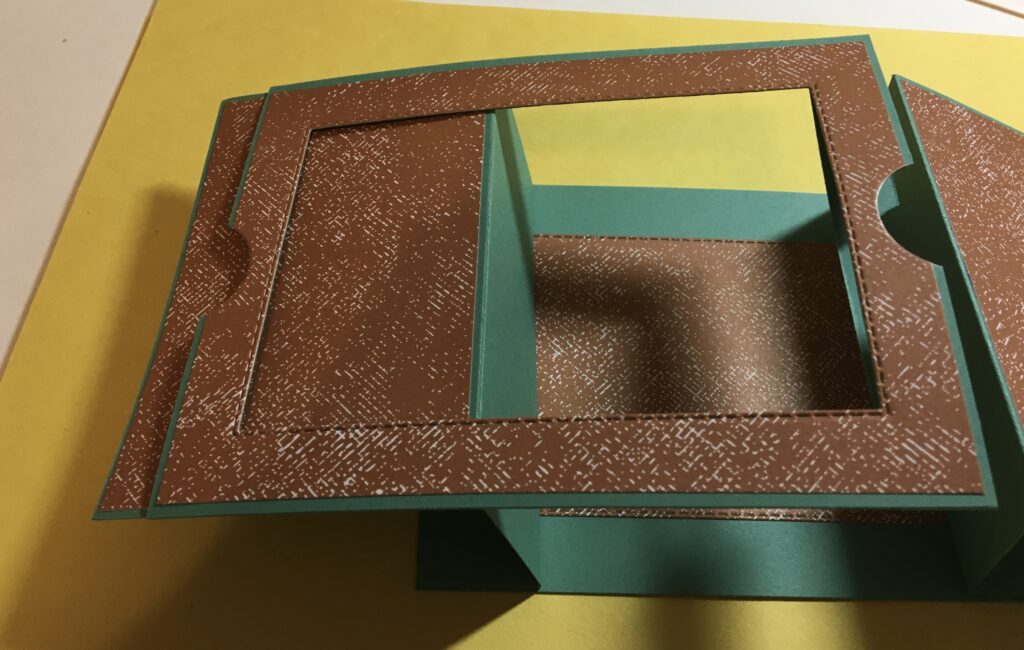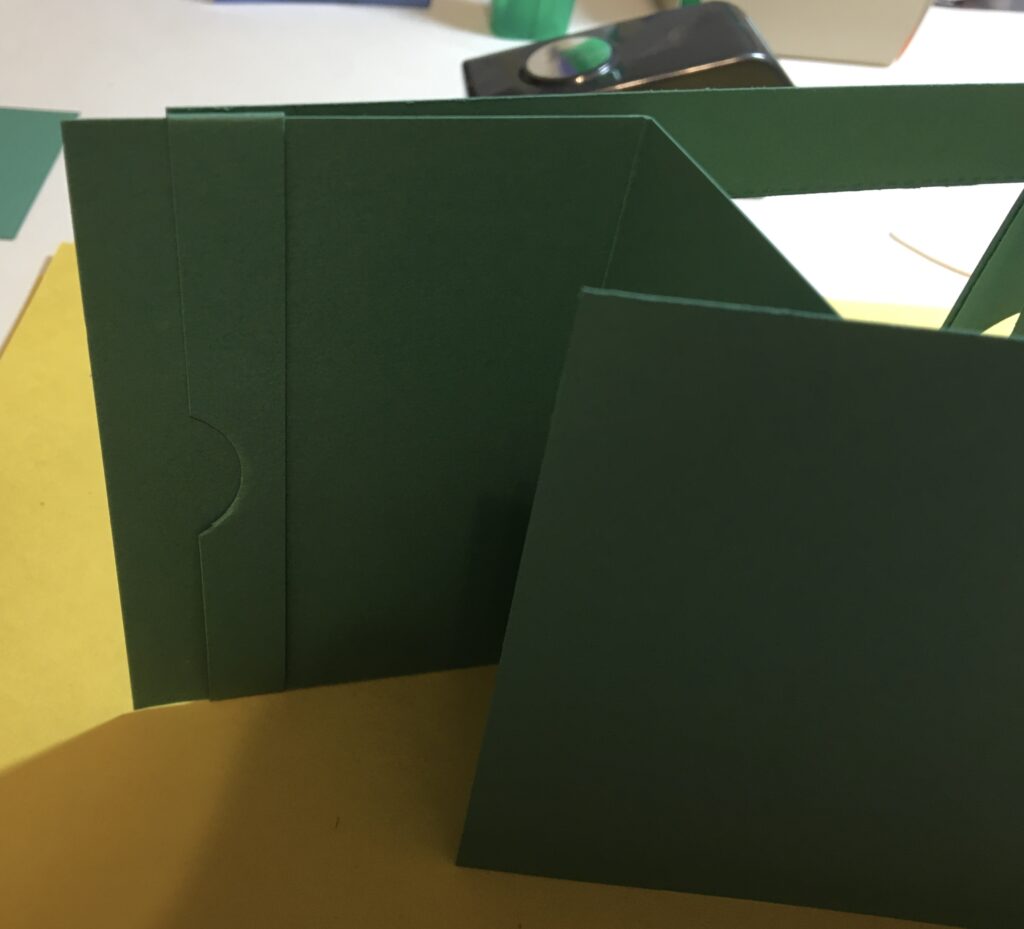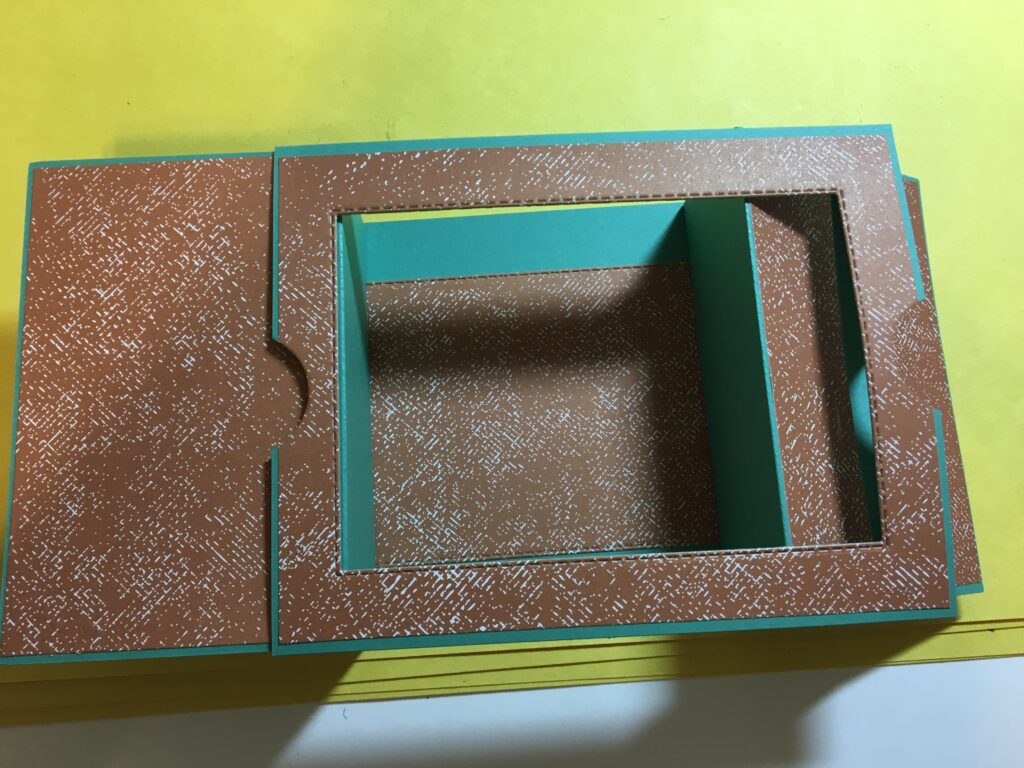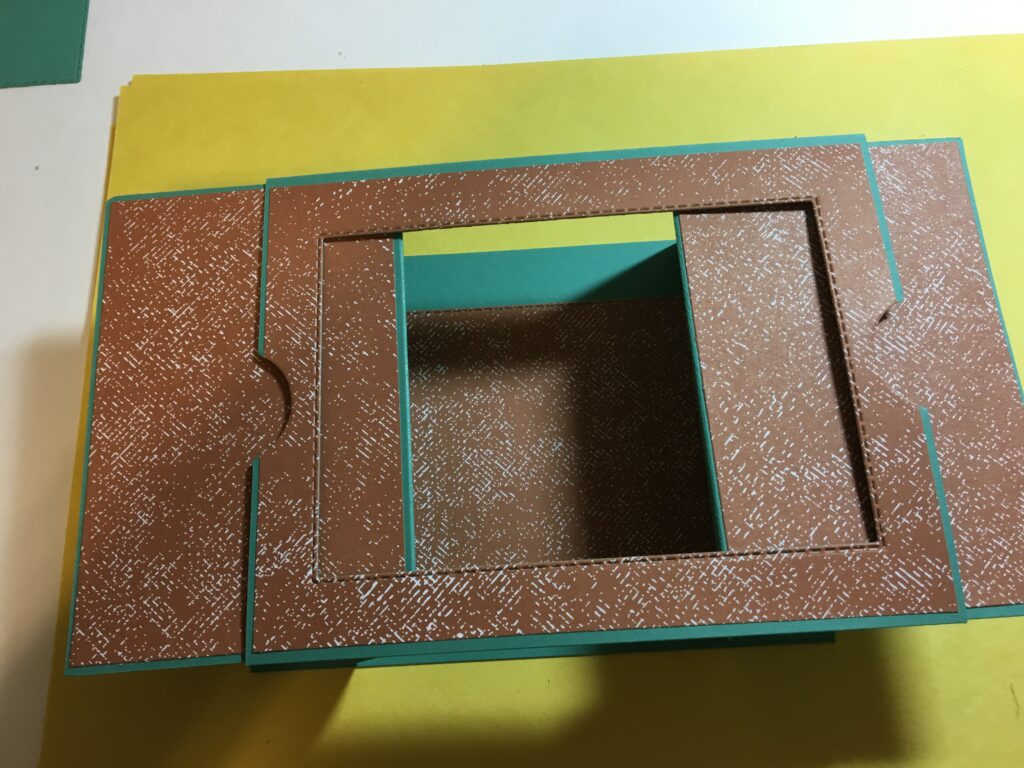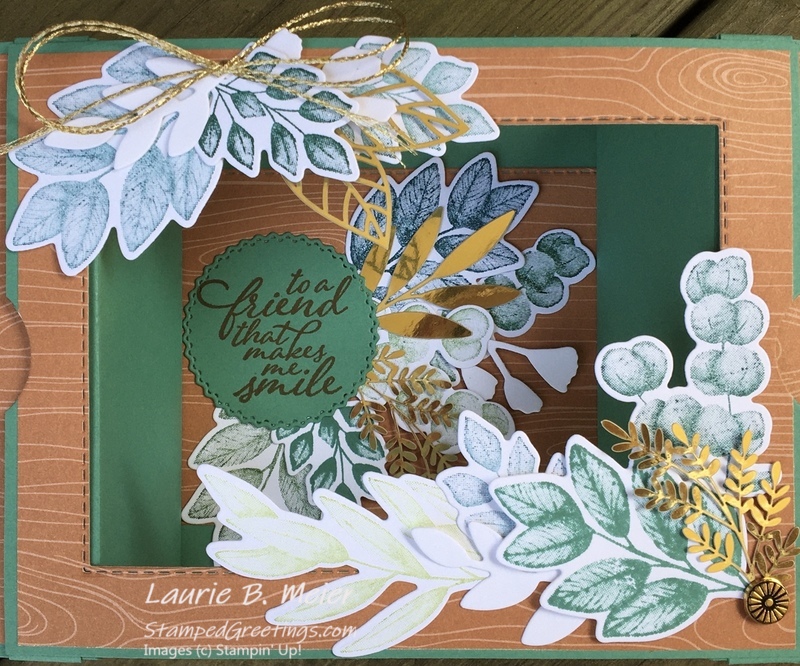A very dear friend of mine, Belinda, who happens to be a fellow demonstrator, introduced me to an amazing design for making cards. If you haven’t tried the theater card design, you really should give it a go. Way too much fun, not super hard at all, and WOW! it’s a stunning way to literally pack a punch inside an envelope.
Take a look at the card that I made with the technique and with many products that are included in the Forever Greenery Suite. You can tell just how much I love this suite of products since that’s all I’ve been posting lately!!
This card is designed to be mailed in an A2 size envelope, as shown in the bottom left picture above. The side panels can then be pulled open, as shown in the top picture above. You can think of this as the “curtains” being opened to reveal the stage behind. This is where the name, Theater Card, comes from. After the “curtains” are pulled open, the card will stand on its own, as shown in the bottom right picture above..
Below are step by step instructions and pictures to help you put together a theater card.
- Pick a color cardstock and Designer Series Paper (DSP) that will go together well.
- Cut an 8 ½” x 11” piece of the color cardstock and cut it into four equal pieces (4 ¼” x 5 ½”).
- The other pieces of paper that you will need for this card include –
- One piece of your choice of DSP cut to 4 1/8” x 5 3/8” (upper left below).
- Two pieces of your choice of DSP each cut to 2 5/8” x 4 1/8” (lower left below).
- Two pieces of the color cardstock each cut to ½” x 8 ½”(right side below).
- Adhere the large piece of DSP directly in the middle of one of the quarter pieces of color cardstock. Put the adhesive only on the edges of the DSP and not in the middle when you attach it to the color cardstock. You will have a small frame of the color cardstock around the DSP. This is going to be the front of your card.
- From your stash, get a large die to cut a shape from the middle of the piece you just put together. In the example card, I used the third largest die in the Stitched Rectangle die collection to cut the shape. Any large shape (square, rectangle, circle, label, oval, etc.) will work well. Just be sure to leave at least ½” on side of the card uncut. You will end up with the pieces shown below in the picture on the right.
- The next step is to work on the background of the card, essentially the “stage”. The die cut DSP piece should be adhered directly to another one of the quarter pieces of your cardstock. The easiest way to make sure the die cuts are aligned correctly is to follow these steps:
- Left picture below – Put the uncut piece of cardstock on the bottom and the die cut frame piece (from the previous step) on top.
- The opening where you die cut is the perfect guide to align the die cut DSP in the middle of the “stage”. Put some adhesive on the back of the die cut rectangle, put it inside the die cut hole just as if you were fitting it into a puzzle, and adhere the DSP directly to the bottom cardstock piece.
- The result is shown in the right picture below. You will have the frame piece (from the previous step), and you will have the cardstock piece with the DSP rectangle adhered in the middle.
- The next step is to build the “curtains” that will be pulled to reveal the stage. The “curtains” are built from the remaining two pieces of the quarter sheets of color cardstock.
- Each of the two pieces of the quarter sheets of color cardstock is scored at 1” and 2 ¾”. The pieces should be folded and brandished with your bone folder to look like the pieces below. Essentially, these pieces will look like the letter “J”.
- The remaining pieces of DSP are adhered to the largest part of these “J” pieces. Look at the picture below to see how the DSP is attached. If the two pieces of DSP have a pattern that needs to match or continue across the pieces, make sure you have the DPS oriented correctly before you adhere it. Note: The picture on the left has the 1” scored area folded under the right side. The picture on the right has the 1” score area folded under the left side.
 Note: You are not imagining anything!!! I have changed the DSP pattern that is included in the directions from this point. Confession – I stopped taking pictures as I finished the first card I was making. Why, you ask. Well, honestly, I don’t know J Let’s just say I wanted to add a little variety to the directions!
Note: You are not imagining anything!!! I have changed the DSP pattern that is included in the directions from this point. Confession – I stopped taking pictures as I finished the first card I was making. Why, you ask. Well, honestly, I don’t know J Let’s just say I wanted to add a little variety to the directions!
- The next step is to attach the “curtains” to the background or “stage” piece.
- Add the left “curtain” first. Lay the “stage” piece on your surface, and get the “curtain” that will go on the left side, as pictured below.
- Add adhesive to the 1” area of the “curtain”, as pictured below, and attach the “curtain” to the left edge of the “stage”, as pictured below.
- The right “curtain” is the next piece to attach. Add adhesive to the 1” area of the “curtain”, as pictured below. But, don’t add this piece directly to the corner of the “stage” just yet.
- You want to line-up the “curtains” in the center before you adhere the right “curtain”. To do this, hold the “right” curtain as a slight angle, as shown below, and put the centers of the “curtains” together in the middle. When they are together, push the right “curtain” into place. It will adhere to the right side of the stage where it should be placed.
- The last thing to do before assembling the card and adding your decorations is to make the bands. The bands will be attached to the back of the frame and will be the pieces that the “curtains” go through to open and close the front of the card.
- The bands are made from the two pieces of ½” x 8 ½” color cardstock.
- Take one of these pieces of cardstock and wrap it around the side of one of the “curtains” that you have made. Essentially, you are measuring a belly-band that will wrap around the “curtain” to hold it in place. Don’t make the band too tight. Follow the pictures below to see how to make the bands.
- When you’ve made the measurements for the bands, these are the pieces that you’ll have:
- The next step is to attach the bands to the front of the card. Get the frame piece for the front of the card and the two measured band pieces together, as pictured below.
- Turn the front of the card over. The bands are adhered on the back of the front piece. Adhere the open ends of one of the bands, as shown below, and attach the band to the end of the card front, as pictured below.
- Repeat these steps for the other side of the front piece to end up with the bands added, as pictured below.
- To make it easier to move the “curtain” open and closed, finger holes (really semi-circles :)) are added using a punch. Follow the pictures below as guides to add your finger holes. The last picture is what you want when you’re done with the front piece.
- Now, you’re ready to put the “curtains” through the bands. Start with one side. Put the “curtain” piece inside the band, as pictured below, and move it back and forth to make sure the “curtain” opens and closes.
- When the first “curtain” can be pulled open, you can comfortably put the second “curtain” into place.
- The card is now ready to be decorated!!! An open view of a decorated card is shown below.
Shown below are the main products that I used to decorate my card. If you click on any picture, you’ll go directly to my on-line store.
Please keep in mind that you can literally decorate this card for any occasion! Shop your own stash to find some great ways to finish your theater card! I would really love to see the cards you create.
Happy stamping!
Laurie
|
|
|
|
|
|
||
|
|
||
|
|
|
|
|
|
